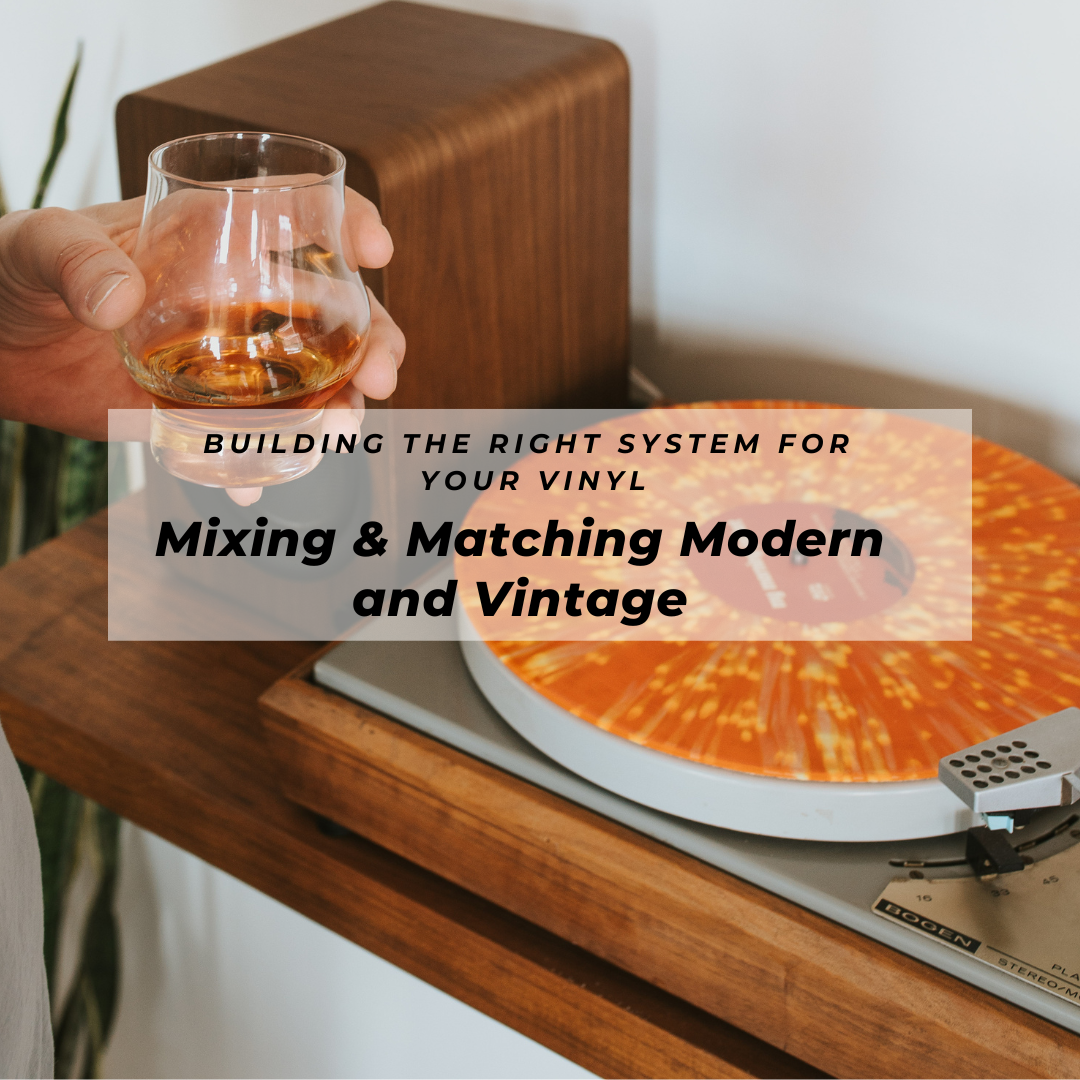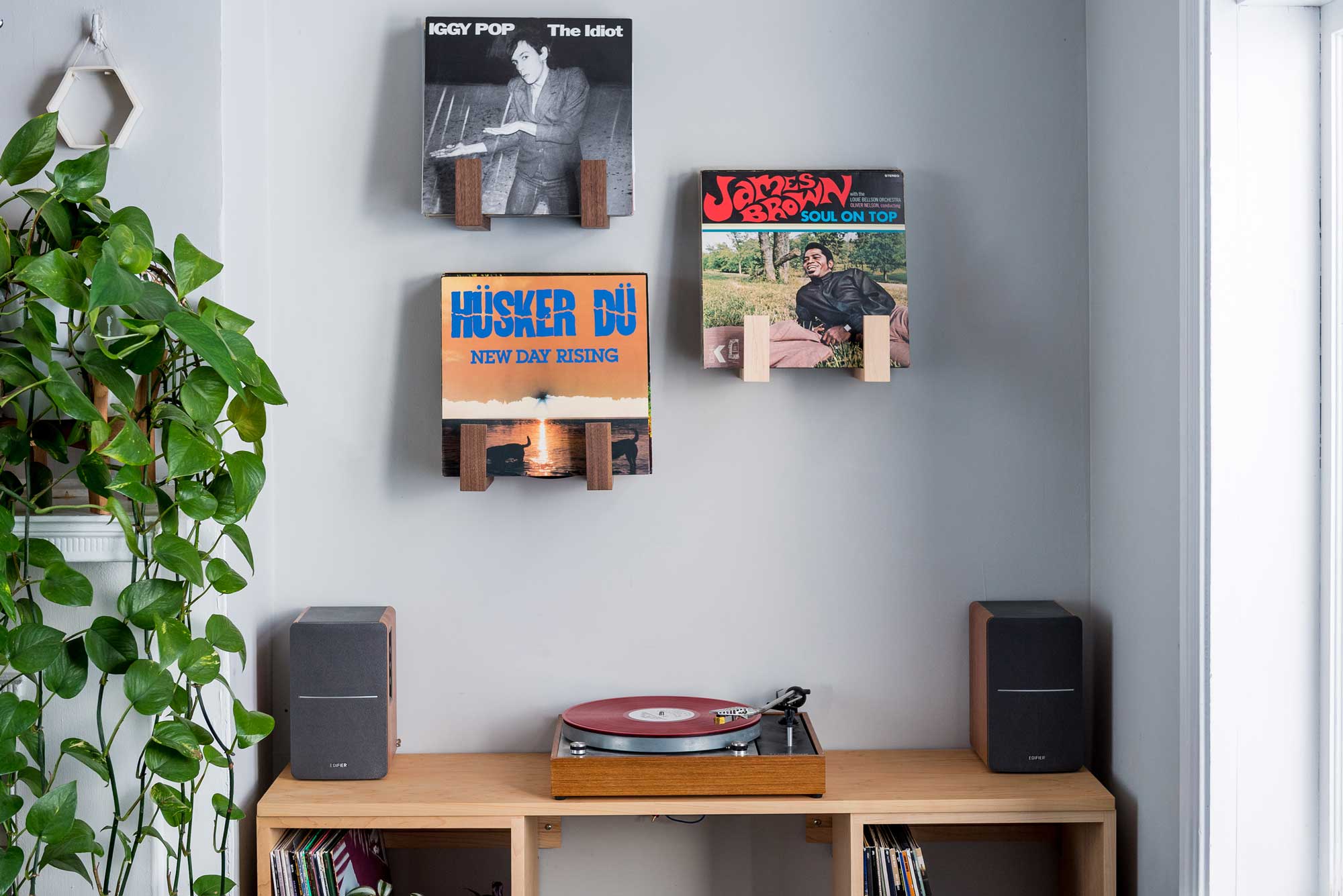The Right Stereo for Your Vinyl: Where to Start with Your Turntable Setup
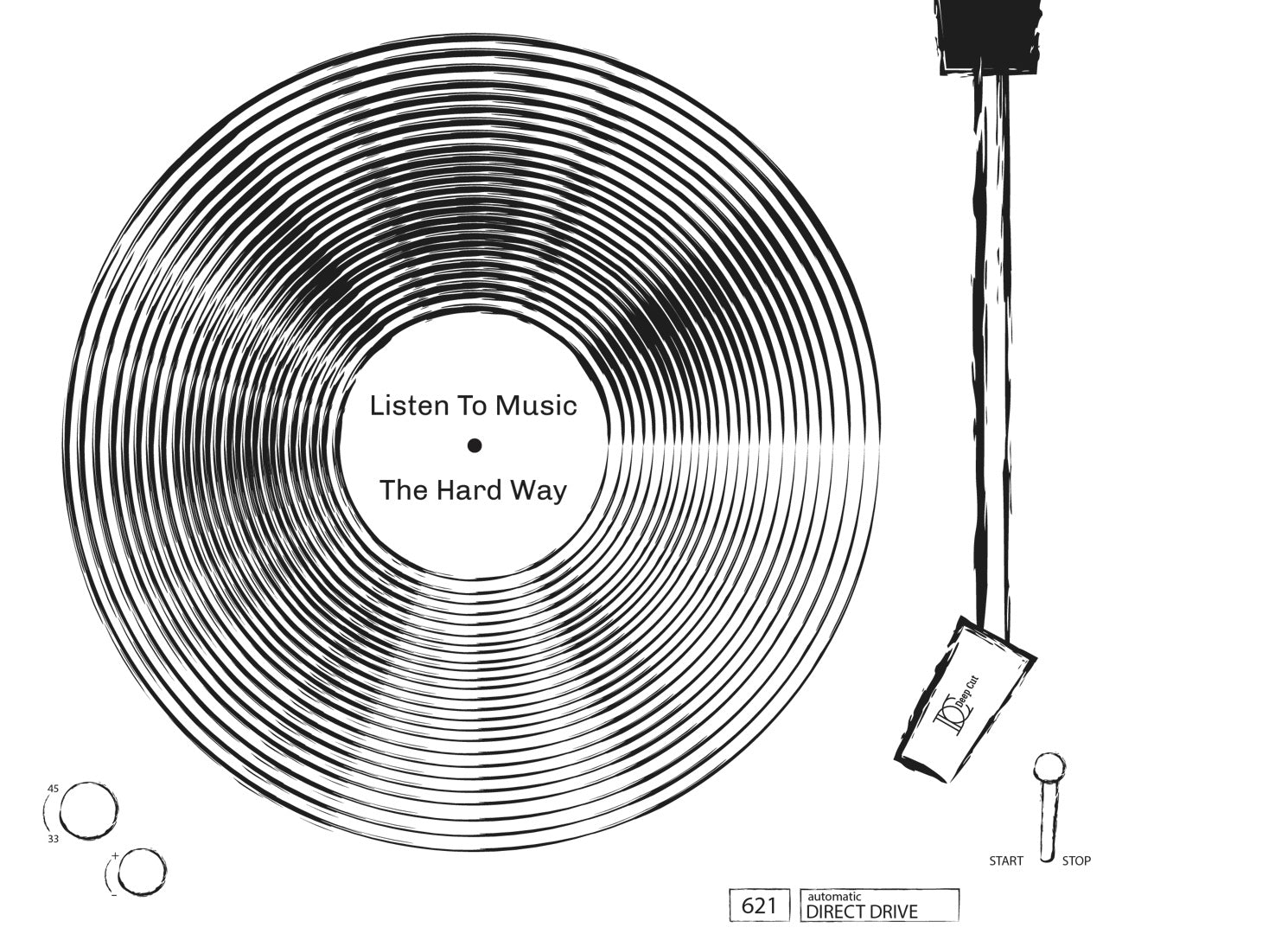
If you have records or you want to start getting into records, you should probably have something to play them on. Maybe you have your killer setup already. If you don’t, here is our advice about how to set one up.
We’ll be frank: We aren’t electrical engineers. We aren’t audiophiles. And we don’t aspire to be. But we have set up our share of systems for friends, family, and people we owe favors. It’s a minor hobby. So we’ll run you through some basics and point you to where you can do your advanced research.
The Basics
If you haven’t built your stereo rig yet, there are some basics we need to cover. Generally, you are going to need four components: speakers to produce the sound, an amplifier to power the speakers, a phono pre-amp to boost the signal of the turntable coming into the amplifier (maybe not, more on this later), and a turntable to play the record. The first decision you will need to make is how you want these pieces configured, because you can assemble them in quite a few packages. The good folks at Turntable Lab can help you explore all of the permutations.
Vintage, Modern, or In-Between
Are you looking for a sound system that is small, discrete, and wireless? Or are you looking for something that is powerful and classic? Or are you looking for a little of both? How you answer that question should determine how you approach your sound system. This can be a question of priorities and taste. Form and function. Style and use. In our eyes, there are no wrong answers here. Just possibilities.
Modern Systems
If you are a strict adherent to minimalism, or if you just have limited space, a modern system is probably the best fit. Think about powered-speakers (also called ‘active’ speakers, they combine the amplifier and the speakers) and a turntable with the option of a built-in pre-amp, like the beautiful line of turntables from U-Turn. If you have Sonos speakers or another wireless system, look for a turntable that will allow you to integrate directly, like the TRNTBL which was designed especially for that purpose.
While modern options are compact and reduce clutter, there are some (potential) downsides. One is that, depending on who you talk to, combining several components into a single unit can lead to compromises in quality (an awesome turntable might have a so-so preamp, for example). Streaming wirelessly can also degrade sound quality, depending on how you go about it (though whether you will be able to tell the difference is another story). But if you value space and minimalism, these are going to be trade-offs worth making.
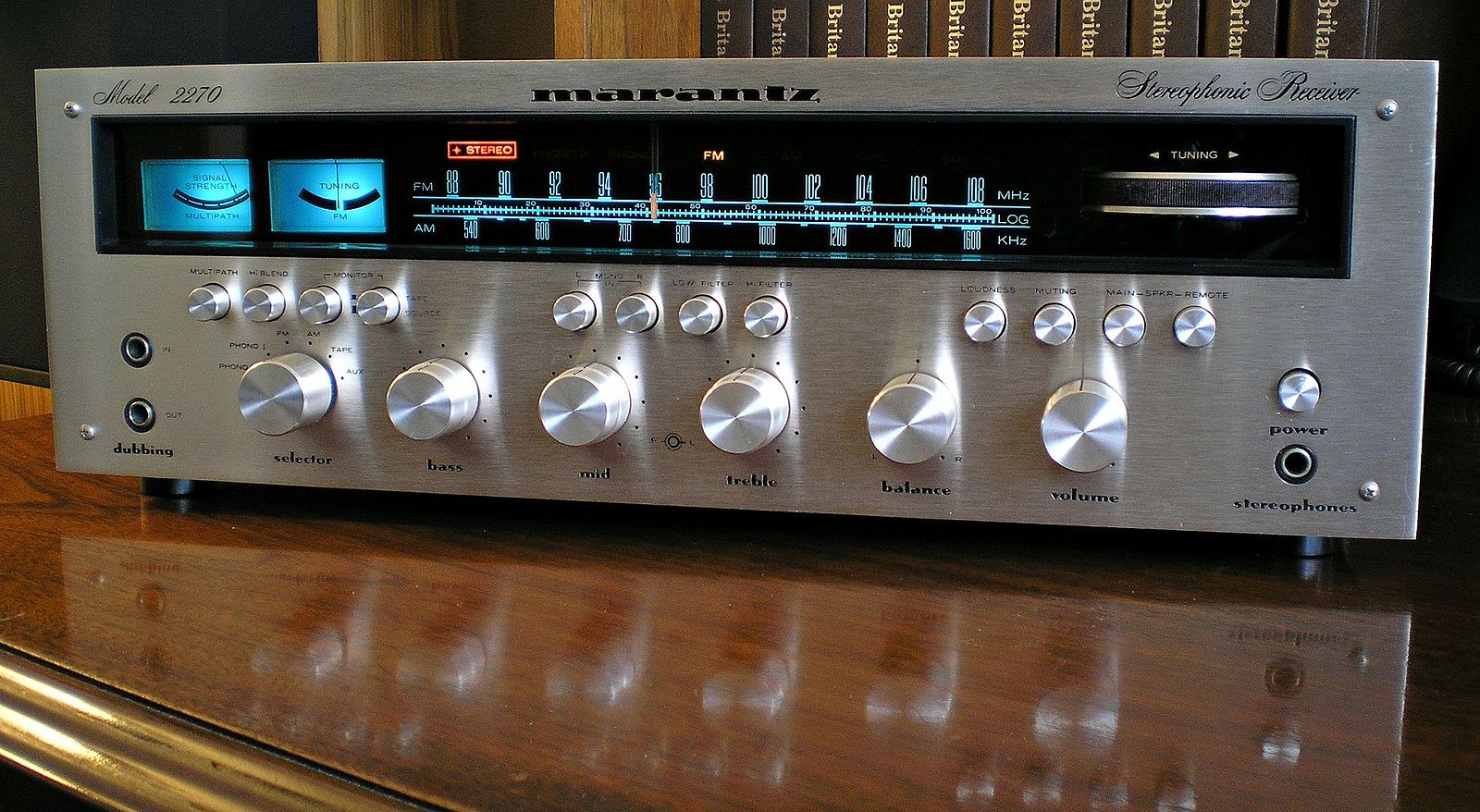
Vintage Marantz receiver, with machined aluminum and lots of knobs to fiddle with. Photo by Ron Clausen.
Vintage Systems
If you really want to crank the volume, like a classic look, don’t want to chance the possibility of compromised sound, and like the idea of spending a little time on the hunt, a vintage system is probably more your speed. A traditional stereo system consists of passive speakers (meaning they do not contain an amplifier), powered by a stereo receiver (an amplifier housed in a unit with a radio and inputs) and a turn-table. Good vintage systems tend to be bigger and bulkier, and feel more solid. Vintage receivers from the 60’s and 70’s are often constructed from wood paneling and machined aluminum, with charming analog signal meters and radio tuners. For many, this remains one of the most attractive eras in stereo history. By the 80’s and early 90’s, you see more black metal, plastic, and primitive digital displays. These aren’t to everyone’s taste, but we at Deep Cut consider them “the right kind of ugly”, as a colleague put it.
Vintage systems are more in demand today, so deals are harder to find than they used to be. But if you find the right shop or right post online, you can also find really good components often for affordable prices.
In-Between
Of course, you can find a solution that is somewhere between totally modern and totally vintage. You may want to use the turntable-receiver-speaker configuration, but use a newer receiver that may be smaller, slimmer, and have features like blue tooth or wifi connectivity for streaming built-in. You might add a discrete analog phono pre-amp between your turntable and your powered speakers or receiver for some added warmth in your sound. There are plenty of hybrid approaches too. Vintage turntable with modern speakers (like the 1970s Thorens hooked up to Edifier powered speakers, pictured), or a modern turntable paired with a vintage receiver, like the Fluance RT-85 playing through the late 60’s Pioneer receiver we have in our house.
The Take-Away
Make a few key decisions that will help you figure out where to start. Answer these questions:

A modern vintage hybrid setup with a late 70’s Technics receiver paired with a modern U-Turn Orbit and pair of KEF Q100 speakers
-
What’s Your Style: There are great sounding stereos of every style. So what suits you and your aesthetic best? Mid-century modern / vintage? 80's / 90’s? Or slick minimalist modern? If you’re not sure, spend some time on Pinterest looking at various kinds of set ups. That’s what it is there for.
-
How and How Often Will You Use It?: Is vinyl going to be the main way you listen to music? Or are you going to be doing the majority through streaming services throwing a record on here and there? If it is the latter, look for more modern equipment. You can retrofit vintage receivers to work with streaming or casting from your phone, but it can be a clumsy process, requiring extra adapters and cables. Modern systems make it easy to switch from turntable to streaming and back again.
-
How Much Space Do You Have?: How much room do you have and how much of it do you want to dedicate to your turntable set up? Again, a lot of vintage options are bigger and require more components. And this is in addition to storage space storage for your records (we may be able to help with that). If you have the space or you want you record set up to be the showcase of the room, vintage is a great option. If not, a modern or hybrid set up may be the way.
Nail down your answers there, and you’ll know where to start.
Next Time
Once you have thought about how you would like to set-up your system, check out our next installment that lays out how to find your vintage equipment.
Want to receive more stuff like this plus news and announcements, promotional offers, and more? Sign up for our emails here…
Leave a comment
Comments will be approved before showing up.
Also in Blog: Deep Cuts

20 Album Covers Perfect For Displaying On The Wall
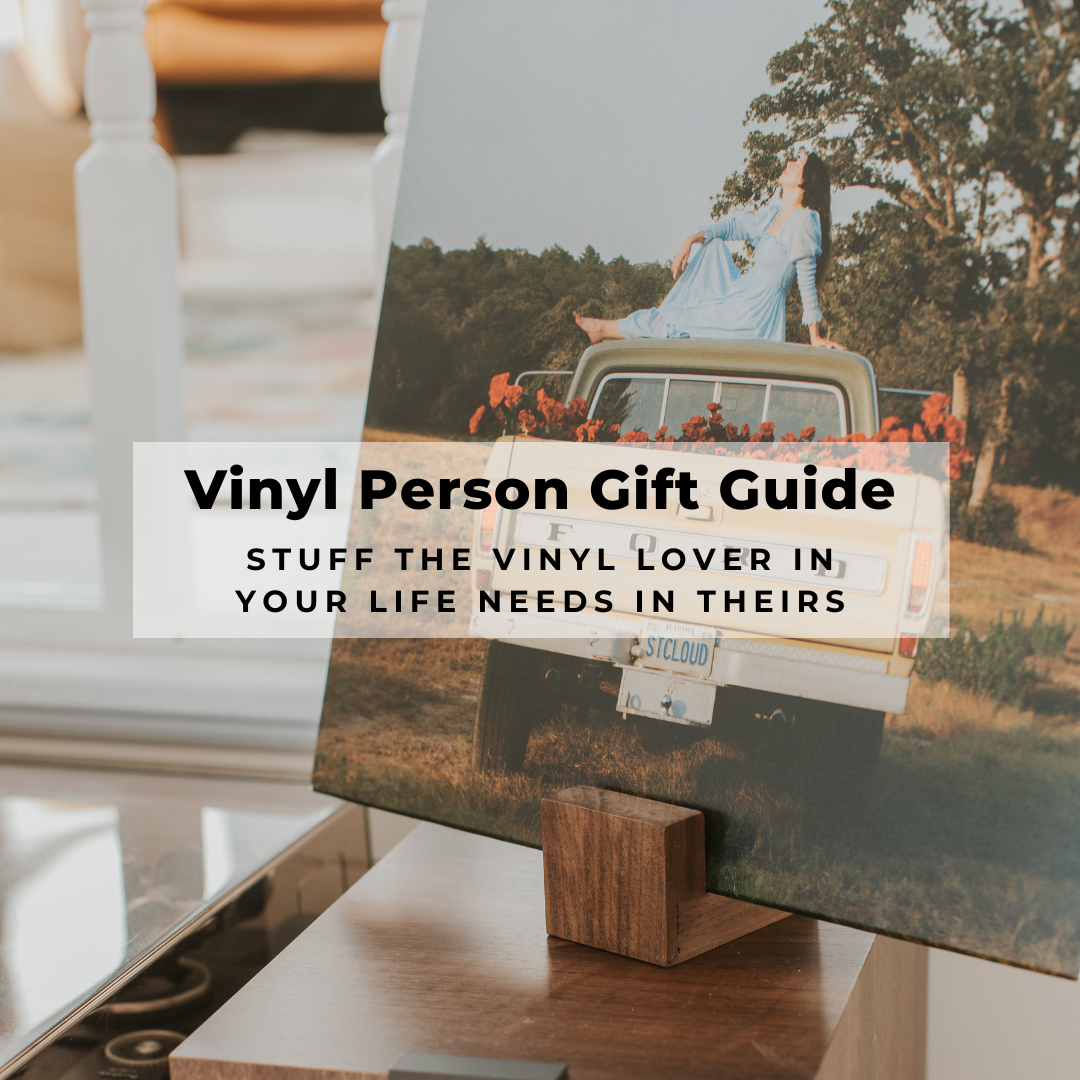
Our 2023 Vinyl Lovers Gift Guide
